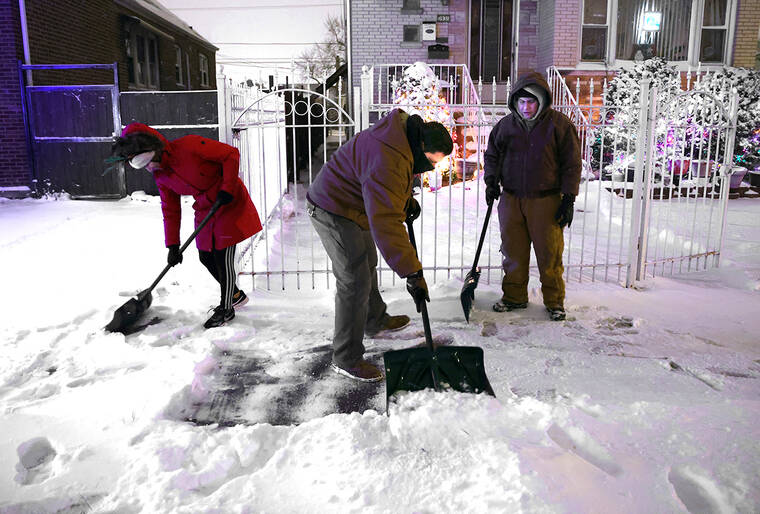’Tis the season to be more neighborly. And doing so can transform communities
You rake your leaves and wake up the next morning only to see more on your lawn. You look to your neighbor’s lawn and realize their leaves have found their way onto your lawn. You say to yourself, “If only they would rake their leaves, my yard would be fine.” How do we approach this situation? Do we let our frustration boil up? Do we talk to them about it? Do we simply stop talking to our neighbor altogether? Or do we offer to rake our neighbor’s yard?
I prefer the last option. After all, I am a product of the 1970s, the time in which we watched shows such as “Mister Rogers’ Neighborhood.” He would often ask, “Won’t you be my neighbor?” It was his way of saying that being a good neighbor was our responsibility.
During that decade, we looked at our neighbors as an extension of our family. Our neighbors inspired certain attitudes and behaviors. I recall having a conversation with my father decades ago on the subject. I told him a neighbor was only someone who lived next to you, but my father had a broader view. He said everyone on the block and in the entire community was our neighbor — hence the term “neighborhood.” That taught me that I was accountable for my actions in the house and in the neighborhood because my parents, in some respects, viewed the community members as a part of our family.
Wouldn’t it be nice to return to those days when we felt accountable to those who lived near us? Sadly, only 57% of Americans know some of their neighbors, a 2018 Pew Research Center survey found. Only about a quarter of Americans say they know most of their neighbors. When data is separated by age, it tells a story as to why we may see more violence in some communities among our youth and young adults. Only 20% for Americans 18 to 29 years old report knowing most of their neighbors, compared with 34% of those 65 years old and older.
In the community where I grew up, we had quite a few block clubs. They provided avenues and opportunities for neighbors to interact, communicate and build lasting relationships. In other words, we knew who our neighbors were. In many urban communities across the country, block clubs used to be more prevalent. They are local organizations that typically focus on the block that they represent. Parents and other members on the block would come together and in large respects held each other accountable for how the lawns and landscapes were kept, and how children in each family behaved in the community. When someone could not shovel their snow or rake their leaves, there were those who would help.
Other benefits these organizations provided were realized by the youth. Conflicts among them were often resolved quickly with assistance from adults. These organizations provided opportunities for parents and guardians to talk and communicate. Children felt safe to play on the block and in the neighborhood because the adults were in control of what was taking place. Law enforcement worked in concert with block club members when situations would occur that required a police presence. Those occurrences were few and far between.
This is a far cry from what is taking place in far too many communities now. From teen takeovers that result in the vandalism of businesses and vehicles, to smash-and-grab episodes perpetuated by far too many of our youths, how our youths define being neighborly is quite different than how it was viewed decades ago.
Unfortunately, we often look for answers outside of the community to address some of the things we can change and improve on our own. In “Mister Rogers’ Neighborhood,” he would visit local businesses and talk to people in the community. He would close the show with inspiring words that reassured our youths that they were valued. Where is that nowadays?
We can chart a new course by being more neighborly this holiday season. So instead of getting upset or disappointed if your neighbors don’t shovel their snow or rake their leaves, ask if they need help. Offer to be of service. While being kind is free, the benefits are priceless. Perhaps it will lead to more safe spaces for our youths to play in. Perhaps, we’ll see less violence and fewer conflicts.
Let us all work to restore peace, civility and happiness in our communities. Former President Barack Obama once said: “In the face of impossible odds, people who love this country can change it.” While it often doesn’t require government to help, our communities need us all to rethink what it means to truly be a good neighbor and live up to it.
Jerald McNair, who has a doctorate in education and a graduate degree in public policy, is a school administrator for South Holland School District 151.


